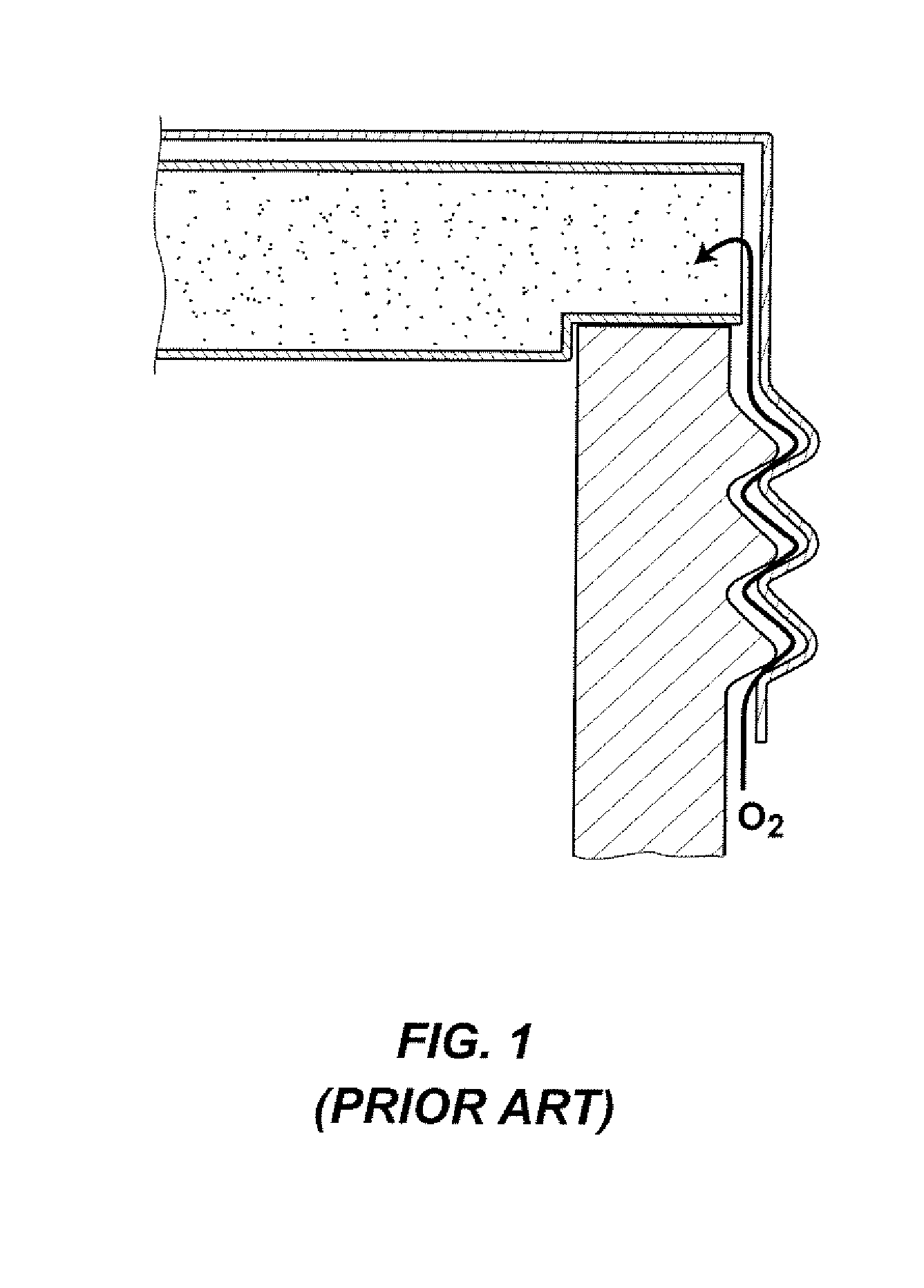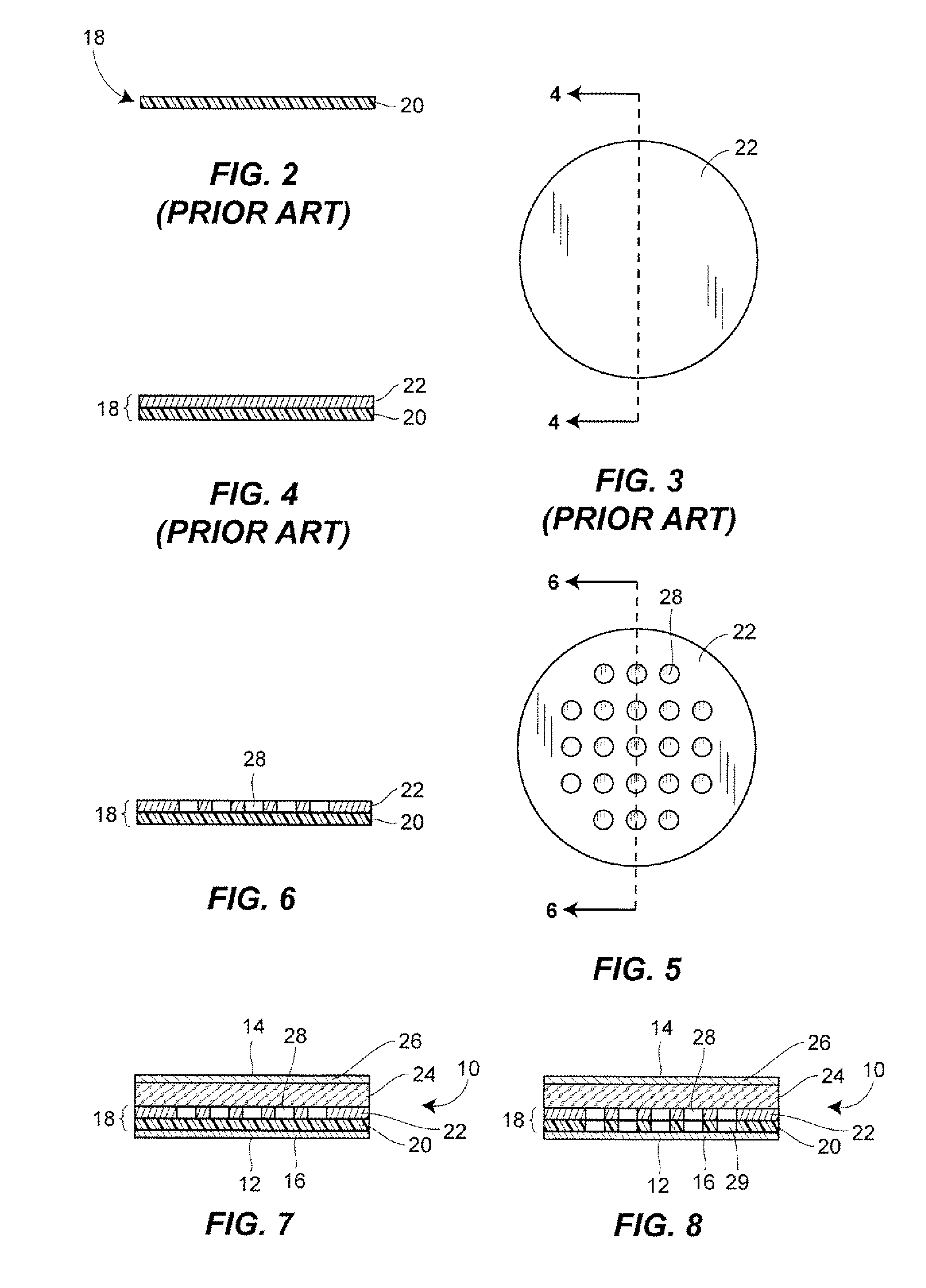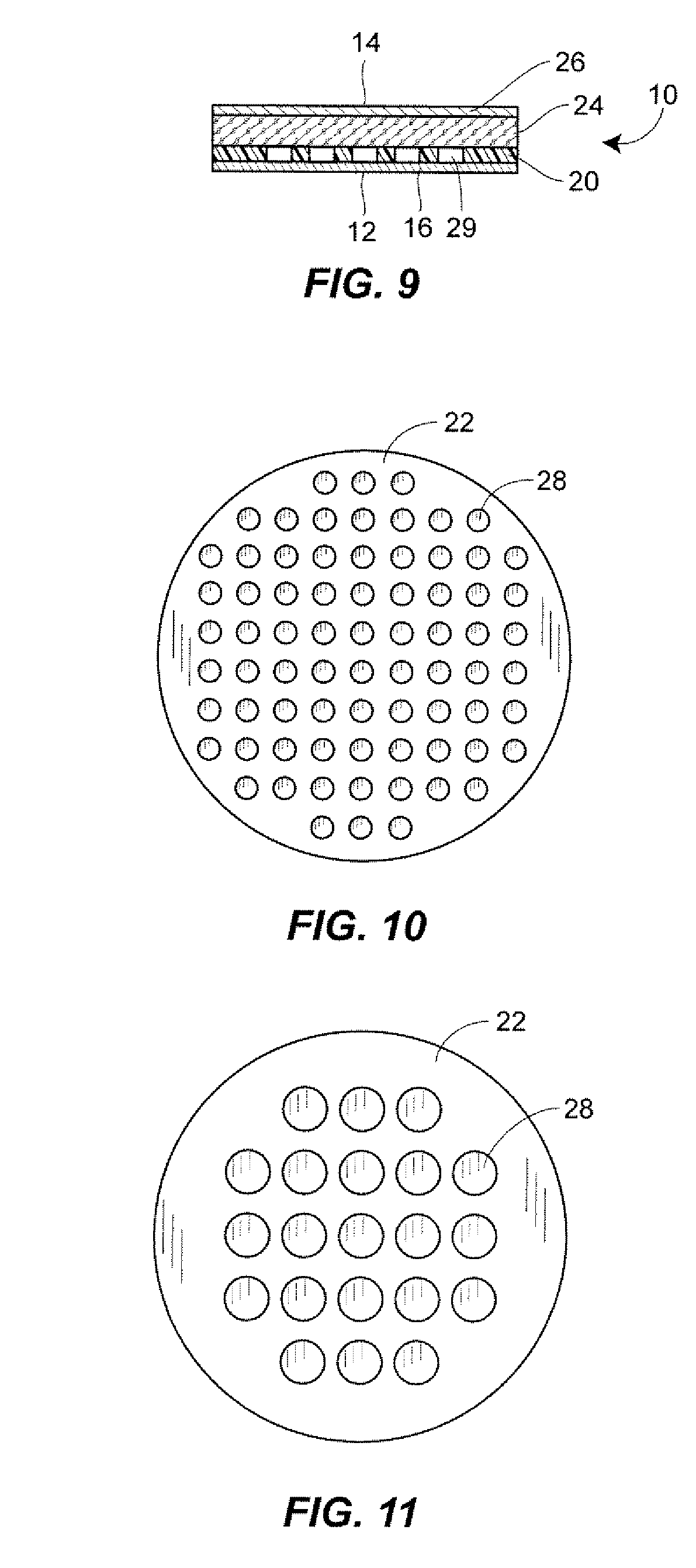Modified barrier layers in liners for container closures, capable of providing varible, controlled oxygen ingress
a barrier layer and container closure technology, applied in the field of sealing for containers, can solve the problems of affecting the freshness, effectiveness and shelf stability of the product, affecting the shelf life of the product, and the oxygen in the headspace dropping, so as to shorten the shelf life. the effect of the problem
- Summary
- Abstract
- Description
- Claims
- Application Information
AI Technical Summary
Benefits of technology
Problems solved by technology
Method used
Image
Examples
Embodiment Construction
[0036]A liner 10 for a screw cap or a latch-cap for jars or bottles typically includes a series of layers that form a laminate. As used herein, bottles shall be understood to include both bottles and jars. Generally, the series of layers of the cap liner 10 from bottom 12 to top 14 includes: A very thin first polymer film layer 16, typically low-density polyethylene (LDPE), but may additionally or alternatively include one or more of a group of PET, SARAN, EVA, or EVA-Scavenger; a barrier layer disposed on the first polymer film layer, that may itself include a barrier laminate 18 of a PVDC layer 20 alone or in combination with a polyethylene laminate or metal foil 22 (typically aluminum or tin) disposed on the PVDC layer 20; fiber card (paper) 24 or polymer foam (which may include one or more of expanded LDPE foam, LDPE foam-Scavenger, expanded HDPE foam, expanded polypropylene foam, or Kraft paper); and a second polymer film layer 26, typically LDPE, but may additionally or altern...
PUM
| Property | Measurement | Unit |
|---|---|---|
| Diameter | aaaaa | aaaaa |
| Diameter | aaaaa | aaaaa |
| Volume | aaaaa | aaaaa |
Abstract
Description
Claims
Application Information
 Login to View More
Login to View More - R&D
- Intellectual Property
- Life Sciences
- Materials
- Tech Scout
- Unparalleled Data Quality
- Higher Quality Content
- 60% Fewer Hallucinations
Browse by: Latest US Patents, China's latest patents, Technical Efficacy Thesaurus, Application Domain, Technology Topic, Popular Technical Reports.
© 2025 PatSnap. All rights reserved.Legal|Privacy policy|Modern Slavery Act Transparency Statement|Sitemap|About US| Contact US: help@patsnap.com



